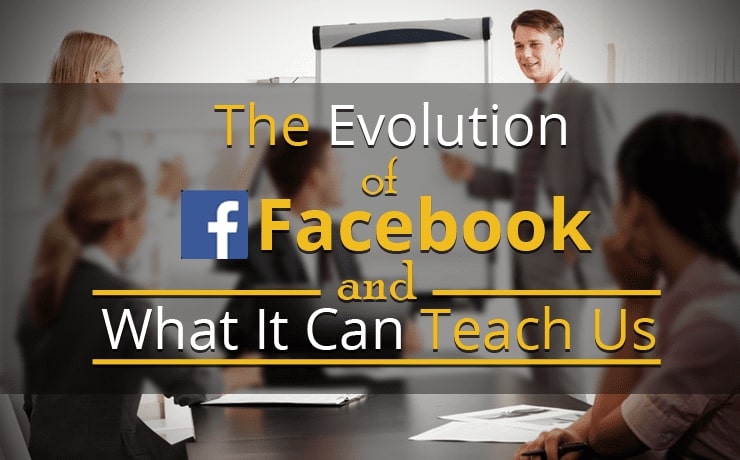The Evolution Of Facebook And What It Can Teach Us

Chad Faith
Director of Content

When Facebook was first launched in 2004, it looked very different from the site we know today. There are similarities of course, but in many ways, the site is almost unrecognizable now. Since those early days, the site has undergone many changes, with many being highly controversial and well-publicized – perhaps more so than any other site in fact. So what can we learn from these changes? What do they tell us about the evolution of the web in general?
2004 – Facebook is Born
In 2004, Facebook was born. If you were to head over to the site during this time, you would find a relatively plain site, in entirely blue and white – though the shade of blue was slightly different to what we associate this giant social network with today. The logo was similar, but it still had those square brackets, giving it a very homemade feel (the brackets make the text look like code). During this time, images and text were always aligned quite perfectly and there was also a strange image of a man’s face hidden behind the binary in the top left.
The original profile included a profile picture and an ‘information’ box, just as it does now, but much more real estate was given to that personal information. The page was otherwise much more sparse and was certainly low on graphics. Here’s the full scoop on Facebook’s creation if you want to know.
2006 – The Mini Feed
Among other changes, Facebook’s first major design in 2006 brought a ‘mini feed’ to the profile pages of users and a ‘NewsFeed’ on the front page that showed information and updates from a user’s connections. This was the first time a Facebook change garnered a lot of feedback, as many users were unhappy with their information being published in such a way. Despite this backlash, it wasn’t long before the newsfeed became the big selling point of Facebook and the thing that set it apart from the competition.
2008 – A Sleeker Welcome Page
2008 brought a sleeker welcome page to Facebook with the logo and coloring we’re now used to. Everything at this time in history lined up properly, small icons were used to denote more information, and signing up was made possible right on the front page.
2009 – The Facebook Homepage
2009 brought even more changes. This time, the NewsFeed became the Facebook Homepage and would invite users to ‘share what’s on their mind’, turning statuses into a big part of the Facebook experience. Leveraging technological advances and improved connections allowed the NewsFeed to be constantly refreshed and stay rich in images and text. This would be further updated in 2011 through the ‘Ticker’ which showed a live stream of updates in a column on the far right.
2010 – Facebook Pages
In 2010, profile pages were updated once again to become more image-heavy, while users were also given the ability to create and like branded or themed pages. This later on attracted many more businesses to set up commercial pages on Facebook.
2011 – The Timeline
Turning their attention to the ‘wall’, Facebook updated this concept with a single ‘timeline’ stretching back through a user’s personal history.
2012 – Facebook Apps
2012 saw Facebook become a platform with its ‘App Center‘ aimed largely at a growing mobile user ship. The center initially featured roughly 500 apps, which were mostly games with a social focus.
2014 – Facebook Page Makeover & Promoted Posts
In 2014, the importance of making the mobile version and the desktop version of Facebook Pages look the same has hit the bigwigs at Facebook and so the update was done. The Facebook Pages also received more than just a cosmetic facelift as Facebook implemented changes to help fans reach your Page content easier than ever. Promoted Posts also received more freedom for marketers to take advantage of.
The Takeaway Lessons
So what can we learn from all this? Like other sites, Facebook has gone through many changes that have largely seen it move away from small text and towards large, beautiful images. The site has also generally grown more and more professional in its layout and has gradually grown out of its ‘hacker’ personality.
This tells us a lot about the company’s emphasis on changing to meet the times, and it shows just how controversial a site change can be if you have enough eyes on you. It also demonstrates that a great idea can overcome a less-than-perfect design!









